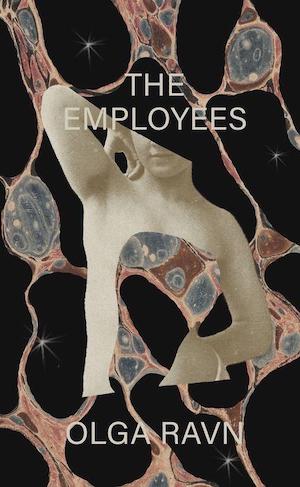Olga Ravn’s The Employees takes place somewhere in space on a vessel called the Six Thousand Ship, manned by a crew of both humans and humanoids. The two work together amicably, united in a singular mission: to survey a planet called New Discovery. That changes when mysterious artifacts, dubbed “the objects,” are recovered from the planet and brought aboard.
You can guess what happens next. Human-humanoid harmony disintegrates, chaos ensues, and we are all meant to wonder: What does it mean to be human? This is of course well-trodden territory (see: Asimov, Chiang, Dick, Battlestar Galactica, Westworld, et al). But The Employees manages to feel fresh and original because Ravn’s background is not in science fiction but poetry. She is attuned to structure, concision, and lyricism in ways only a poet could be, and is less interested in world-building than in individual interiorities.
A committee arrives on the Six Thousand Ship to assess the effects of the objects on the crew. The Employees comprises dozens of transcripts from the committee’s HR-style interviews with crewmembers. We are told this at the outset, with an introduction written in the sort of garbled corporatese that pervades the book:
“The following statements were collected over a period of 18 months, during which time the committee interviewed the employees… to gain knowledge of local workflows and investigate possible impacts of the objects, as well as the ways those impacts, or perhaps relationships, might give rise to permanent deviations in the individual employee, and moreover to assess to what degree they might be said to precipitate reduction or enhancement of performance, task-related understanding, and the acquisition of new knowledge and skills, thereby illuminating their specific consequences for production.”
Buy the Book


The Employees
At first the committee’s findings pertain to crewmembers’ intense responses to the objects. The objects are fragrant, radiant, throbbing, fleshy, hostile, sentient, like eggs, like maggots, like talismans. They elicit different responses between humans and humanoids. “To us, the objects are like an artificial postcard from Earth,” one human crewmember remarks. “To them, they’re a postcard from the future.” For humanoid crew members, the objects awaken impulses normally suppressed by their programming. Beset by existential crisis, they get a bit testy with their human coworkers.
In its entirety, The Employees reads like a dramatic text, a collection of monologues that could also very well be prose poems. Within the constraints of their “statements,” employees either give corporate-friendly non-answers (“I’ll be happy to oversee implementation of a remote shutdown program and facilitate reuploading of those members of the crew who will benefit most significantly from a minor memory loss,” says one human crew member, offering to forcibly switch off select humanoid coworkers.) or spill their guts (“I realize I’ll never be myself again if I don’t get away from here,” says a humanoid. “I can see New Discovery from the panorama windows, the long stream in the valley that poisoned us with happiness.”). As circumstances on the ship become increasingly dire, gut-spilling becomes the norm. “We want to confess, and you’re our confessional,” says one interviewee to the committee. “We want to write our testament, and you’re our notaries.”
This manipulation of contrasting tones—from management speak to emotional candor—is as much the handiwork of Ravn as it is Martin Aitken, who translated The Employees from Danish. The term “masterful” is so oft-used as to become diluted, bordering on cliché, but in the case of Aitken, it applies in its truest sense. Aitken, who has also translated works by Karl Ove Knausgård and the PEN Translation Prize-winning Love by Hanne Ørstavik, captures the distinct voices of the countless characters whose recorded statements make up The Employees, and pulls off perhaps the hardest feat of translation—the feeling that the work hasn’t been translated at all.
Together, Aitken and Ravn deftly transcribe internal turmoil into written language. The prose tenses as psychosis grips the ship—in real time we see the crew lose its collective mind. Uncertainty bleeds through employees’ statements. “Am I human?” one interviewee asks the committee in desperation. “Does it say in your files I am?” “Are you going to troubleshoot me?” a humanoid asks. Others move to stamp out uncertainty with systematic solutions: One humanoid employee notes the need to prevent “nostalgia attacks”—that is, to ensure “the human section of the crew don’t buckle under to nostalgia and become catatonic.”
The psychic pressures in the novel come through with its multiple, oscillating perspectives and singular, vacuum-sealed setting; it takes the form of what on television would be called a “bottle episode.” Human and humanoid, creator and creation, employer and employee share the Six Thousand Ship’s limited real estate. And though the ship contains a vast operation—including a crematorium, a laundry room, an administrative wing—it’s cloistered enough that the spark of conflict quickly becomes a blaze.
Yet the overall tenor of The Employees is so subdued as to be chilling. I shivered reading one humanoid’s piercing indictment of humanity (”You made me, you gave me language, and now I see your failings and deficiencies.”), and another human’s bleak resignation to mortality (“When the crew are dead, the objects will still be here, in the rooms, unaltered by our having come and gone.”) Still there is something hopeful about The Employees—a sense that creating beauty is both one of humanity’s basest instincts and one of its highest callings, and that embracing all the tactile and material and erotic and physical and emotional experiences that life has to offer is essential to a rich, textured existence.
There I go, talking in earnest about what it means to be human. But The Employees makes the question feel a bit less trite. This is mostly thanks to the nature of the objects, which are ill-defined enough to absorb the reader’s unique projections, fears, fantasies. One humanoid who is particularly moved by the objects feels “as if the objects only existed so as to awaken particular feelings in me by way of their form and material. As if that were their actual purpose.”
The Employees is published by New Directions.










